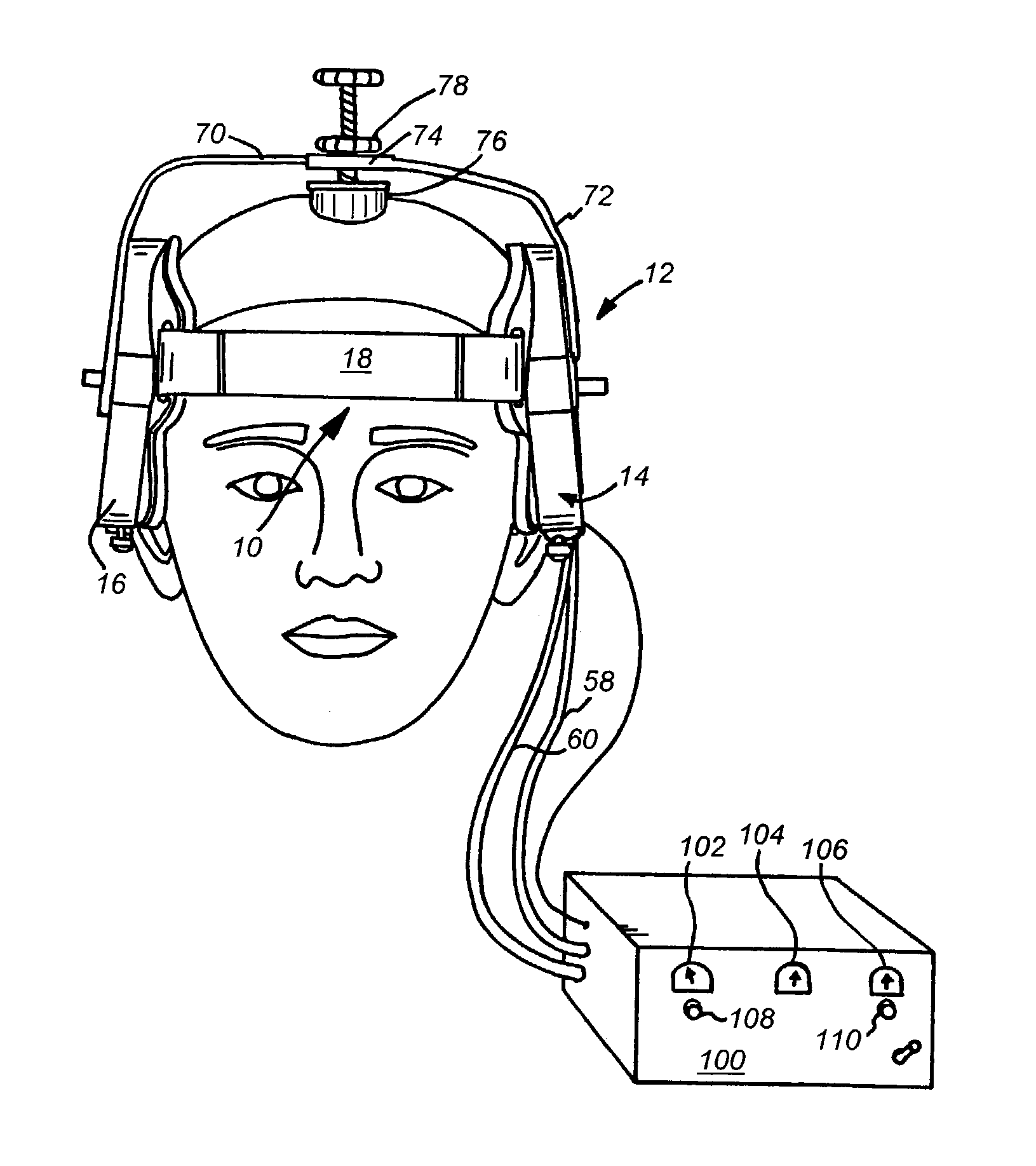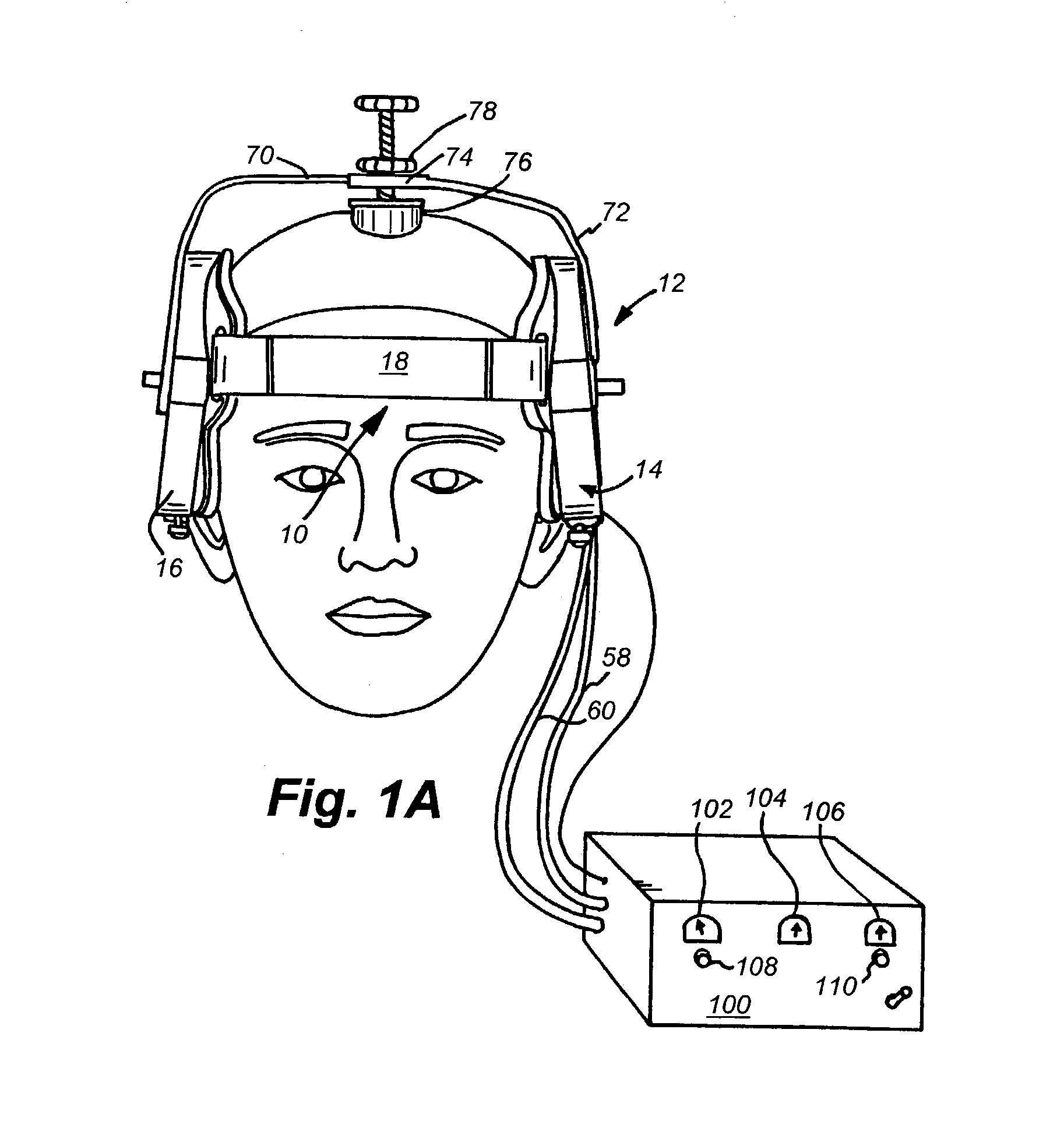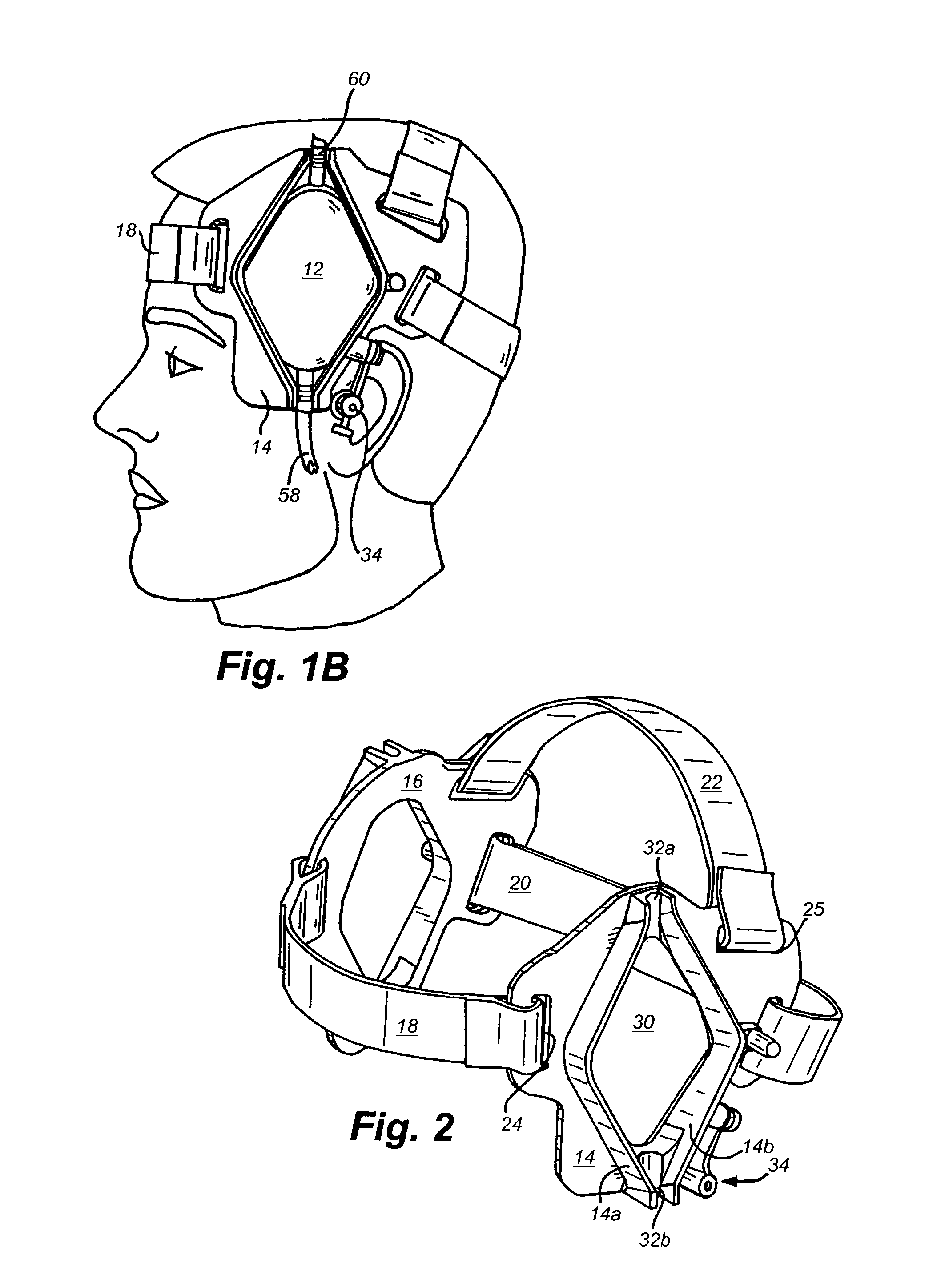Encephalic insonication
a technology of encephalic insonication and insonication chamber, which is applied in the field of insonication of animal bodies, can solve the problems of only 5% of energy transmission, inability to effectively use encephalic insonication frequency, and pain for patients, and achieve the effects of stimulating vasodilation, stimulating vasodilation, and enhancing perfusion in ischemic tissue surrounding a blood clo
- Summary
- Abstract
- Description
- Claims
- Application Information
AI Technical Summary
Benefits of technology
Problems solved by technology
Method used
Image
Examples
Embodiment Construction
[0040]The following description of the invention will be best understood by concurrent examination of FIGS. 1A and 1B, which are front and side pictorial views of the apparatus of the present invention mounted on the head of a patient for treatment of an embolus in the brain, in conjunction with FIG. 2 which is a view in perspective of only a portion of the headpiece. In FIG. 1, the apparatus of the present invention comprises a head unit having an inner headpiece 10 and an outer driving unit 12. The headpiece 10 comprises a frame 14 connected to lateral and transverse flexible straps 18, 20, respectively. The length of each strap is adjustable to accommodate heads of various sizes. To this end, in the specific embodiment described herein, the opposite end of each strap has a fastening element (e.g., a strip of an interlocking material such as Velcro® fastener material) on opposed faces thereof to enable a technician to quickly slip the strap through a slot such as slots 24 or 25 on...
PUM
 Login to View More
Login to View More Abstract
Description
Claims
Application Information
 Login to View More
Login to View More - R&D
- Intellectual Property
- Life Sciences
- Materials
- Tech Scout
- Unparalleled Data Quality
- Higher Quality Content
- 60% Fewer Hallucinations
Browse by: Latest US Patents, China's latest patents, Technical Efficacy Thesaurus, Application Domain, Technology Topic, Popular Technical Reports.
© 2025 PatSnap. All rights reserved.Legal|Privacy policy|Modern Slavery Act Transparency Statement|Sitemap|About US| Contact US: help@patsnap.com



